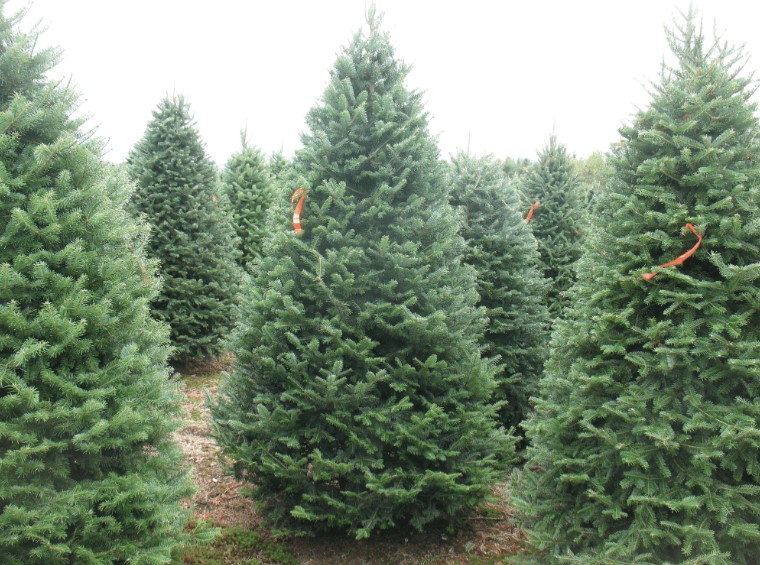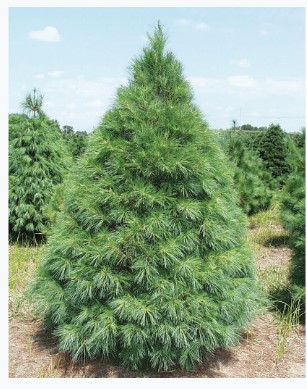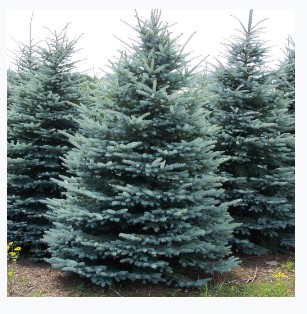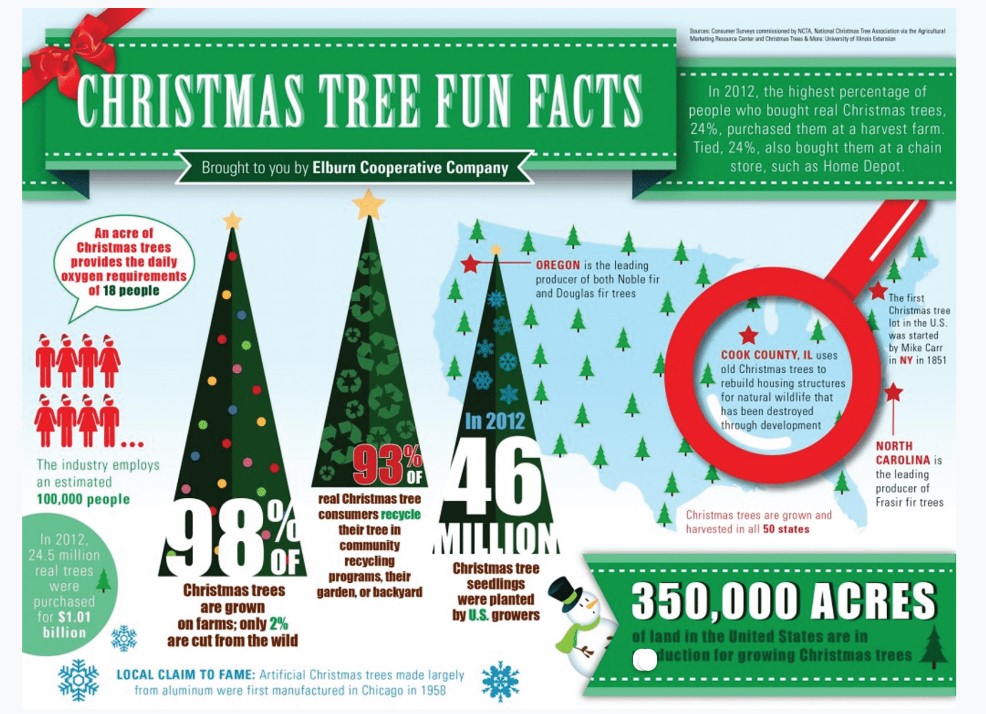Tis the season for that annual debate, when families discuss the choice of Christmas trees—artificial or the real thing? The ease of a pre-lit tree versus the fragrance of a cut tree; get it down from the attic, visit a neighborhood tree lot, or make the trip to a tree farm? This is serious decision making in many households.
If you are contemplating a cut tree this year, let us consider a few options. We all have memories of Christmas trees from our childhood—the shape, size, smell, and color. These recollections typically dictate our preferences and a penchant for one species over another.
As a gardener, selecting a live tree is an obvious recommendation. Spice up and brighten the home with the real thing. And why buy a tree only to throw it away after the holidays? Create a new tradition, make a memory, and plant the tree as a family project.
When purchasing a living tree, check carefully for insects and small critters, if burlap-wrapped place in a large plastic container and stabilize. Move the tree gradually into the house by placing in the garage for a few days, then situate in a cool location away from drafts and heating ducts. Water carefully and tend to it as any inside plant while recognizing that this is indeed an outside plant and cannot remain indoors for more than a week or two.

Balsam
The Balsam fir (Abies balsamea) is a North American species native to Canada and the northeastern United States. A small- to medium-sized evergreen, the balsam is said to be the most aromatic of all firs. Nine to ten years of field growth are necessary to produce a six to seven foot tree.
As a Christmas tree, Balsam fir features a number of desirable qualities including its dense, narrow, pyramid-shaped form with glossy dark green needles and its continued pleasant fragrance that can persist for a long period of time.
The Balsam fir provides food for a number of wild animals including moose and squirrels while the wood of the tree is used in the manufacture of paper and balsam fir oil is an EPA approved nontoxic rodent repellent. Balsam resin has been used as a glue for eyeglasses, optical instrument components, and for the preparation of permanent mounts of microscope specimens. Native Americans used elements of Balsam in the natural treatment of coughs, colds, influenza, laryngitis, and sore throats.
The Abies balsamea species symbolizes friendship, and centuries ago, the custom of placing a branch over the door began to ensure a joyful season and to keep evil spirits at bay, while also purifying and cleansing the home. Today, many products are combined with the aromatic foliage for use as room deodorizers, incense, and sachets.
Pines
 The Scotch Pine (Pinus sylvestris) is commonly used as a Christmas tree because it has extremely stiff branches with dark green needles that will remain on the tree for several weeks even when dry, a pleasant, long-lasting scent, and an open appearance that allows space for the placing of ornaments. Another popular choice is the Virginia Pine (Pinus Virginia) with its dark green needles, aromatic pine fragrance, and strong branches for heavy or large adornments.
The Scotch Pine (Pinus sylvestris) is commonly used as a Christmas tree because it has extremely stiff branches with dark green needles that will remain on the tree for several weeks even when dry, a pleasant, long-lasting scent, and an open appearance that allows space for the placing of ornaments. Another popular choice is the Virginia Pine (Pinus Virginia) with its dark green needles, aromatic pine fragrance, and strong branches for heavy or large adornments.
Pines grow well in our area in full sun and acidic soils, make excellent wind breaks or privacy screens, require little in the way of maintenance, and may endure to one hundred years or more. They ensure their survival with the production of cones as propagation. Pine seeds from the cones are eaten by birds and squirrels and the seeds spread by these wildlife creatures.
Pine trees are long-living evergreen trees valued as timber for carpentry items like furniture and floors. They are also prized as attractive ornamental plants for parks and gardens, appreciated for their culinary uses (pine nuts), and their foliage is often utilized in the art of creating beautiful baskets, trays, and centerpieces. Pine trees, their cones, and their boughs are all known for their agreeable aroma and used extensively for holiday decorations.
 Spruce
Spruce
The Spruce is a coniferous evergreen tree of the genus Picea found in northern temperate regions around the world; this massive tree sometimes soars to a height of two hundred feet when fully mature. The Blue Spruce (Picea pungens) is the best among the species for use as a Christmas tree in the home—it has an exceptional symmetrical form, reliable needle retention, a dark green to powdery blue color with stiff branches and needles that will support heavy decorations and ornaments.
Spruce is one of the most important woods in the production of paper as it has long wood fibers that bind together to make a durable product, and because of this they are cultivated over vast areas for the paper industry. Often called “whitewood,” strips of spruce wood are utilized in the crafting of fine musical instruments like guitars, mandolins, cellos, and violins. Spruce wood has also been used in the construction of wooden air planes—the Wright brothers first air craft was built of spruce.
Research also shows that North American Native Americans made use of the spruce tree in daily life. The tips of the needles were used for making syrup, the roots for basket weaving, the sap for chewing gum, and the needles for brewing tea.
More trees recommended by the National Christmas Tree Association
Fraser Fir (Abies fraseri) - Dark green needles with good needle retention; nice scent, pyramid-shaped strong branches that turn upward. Named for botanist, John Fraser, who explored the southern Appalachians in the late 1700’s.
Grand Fir (Abies grandis) - Shiny, dark green needles that when crushed give off a citrus smell.
Noble Fir (Abies procera) - Bluish-green needles with a silvery appearance; short, stiff branches; great for heavier ornaments; used to make wreaths, door swags, and garlands.

Christmas Fun Facts
Tree
- Christmas trees have been sold commercially since about 1850.
- Thirty- to thirty-five million trees are sold in the United States every year.
- The best-selling Christmas trees are Scotch pine, Douglas fir, Noble fir, Fraser fir, Virginia pine, Balsam fir, and white pine.
- There are more than twenty-one thousand Christmas tree growers in the United States and twelve thousand “cut-your-own” farms.
- Christmas trees are grown in all fifty states including Hawaii but the top producers are Oregon, North Carolina, Pennsylvania, Wisconsin, Washington, New York, and Virginia.
- More than two thousand trees may be planted per acre, taking six to ten years to grow to maturity.
- Ninety eight percent of Christmas trees are grown on farms employing over one hundred thousand workers.
- In 2002, twenty-one percent of American homes had a real tree and forty-eight percent had an artificial tree, while thirty-two percent had no tree at all.
- In 2007, the retail market value of the thirty-one million trees purchased was $1.3 billion.
- Ninety-three percent of real trees are recycled in recycling programs.
- In the first week, a tree in the home will consume a quart of water per day.
- In 1856, Franklin Pierce was the first President to place a Christmas tree in the White House, and in 1923, Calvin Coolidge started the National Christmas Tree Lighting Ceremony on the White House lawn.